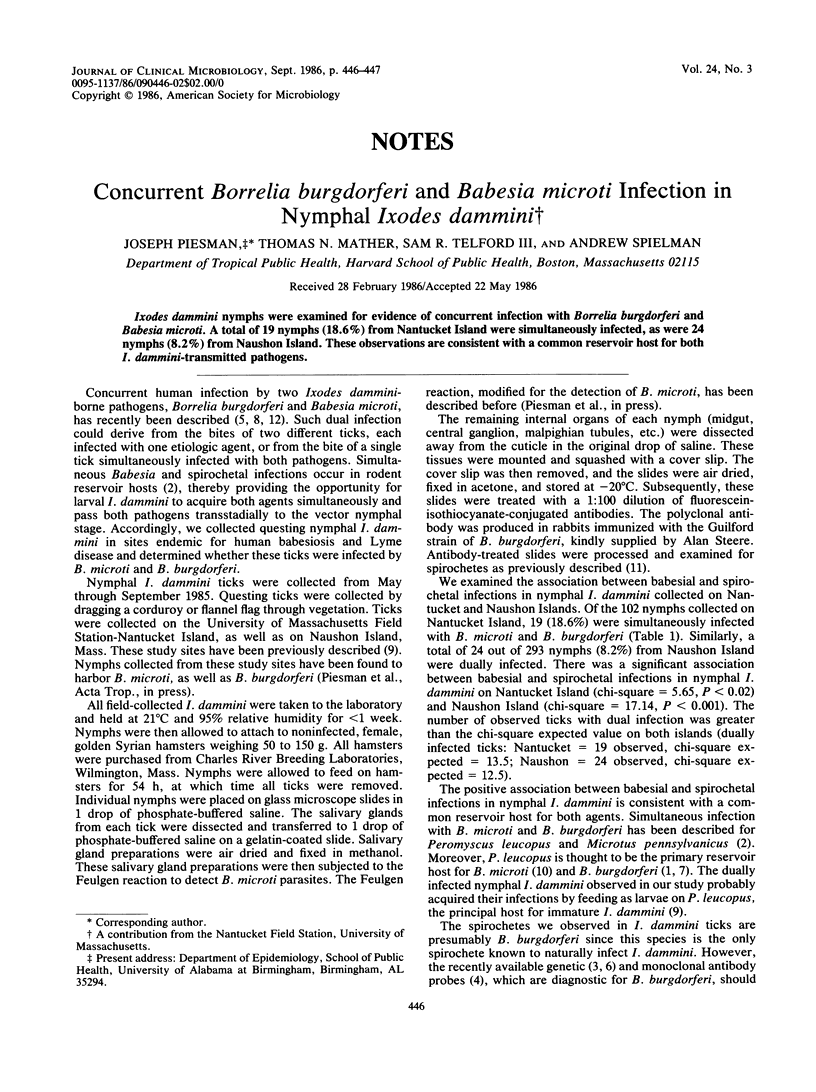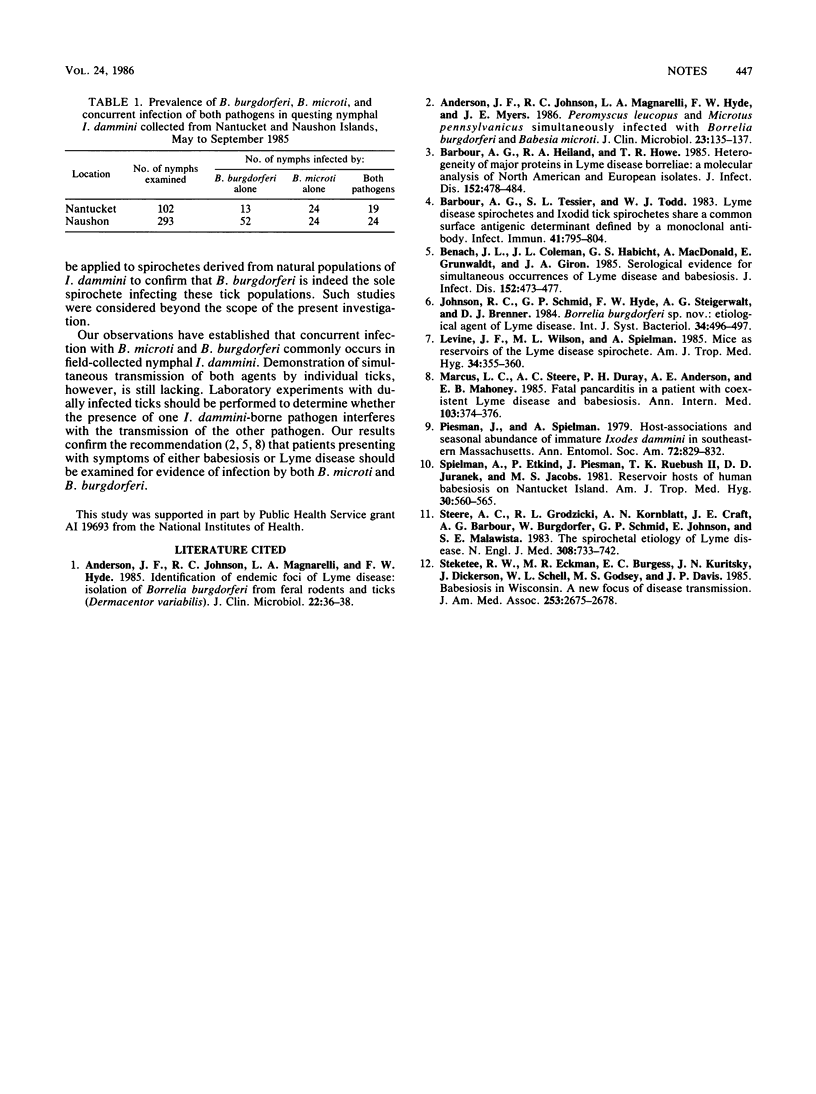Abstract
Ixodes dammini nymphs were examined for evidence of concurrent infection with Borrelia burgdorferi and Babesia microti. A total of 19 nymphs (18.6%) from Nantucket Island were simultaneously infected, as were 24 nymphs (8.2%) from Naushon Island. These observations are consistent with a common reservoir host for both I. dammini-transmitted pathogens.
Full text
PDF

Selected References
These references are in PubMed. This may not be the complete list of references from this article.
- Anderson J. F., Johnson R. C., Magnarelli L. A., Hyde F. W. Identification of endemic foci of Lyme disease: isolation of Borrelia burgdorferi from feral rodents and ticks (Dermacentor variabilis). J Clin Microbiol. 1985 Jul;22(1):36–38. doi: 10.1128/jcm.22.1.36-38.1985. [DOI] [PMC free article] [PubMed] [Google Scholar]
- Anderson J. F., Johnson R. C., Magnarelli L. A., Hyde F. W., Myers J. E. Peromyscus leucopus and Microtus pennsylvanicus simultaneously infected with Borrelia burgdorferi and Babesia microti. J Clin Microbiol. 1986 Jan;23(1):135–137. doi: 10.1128/jcm.23.1.135-137.1986. [DOI] [PMC free article] [PubMed] [Google Scholar]
- Barbour A. G., Heiland R. A., Howe T. R. Heterogeneity of major proteins in Lyme disease borreliae: a molecular analysis of North American and European isolates. J Infect Dis. 1985 Sep;152(3):478–484. doi: 10.1093/infdis/152.3.478. [DOI] [PubMed] [Google Scholar]
- Barbour A. G., Tessier S. L., Todd W. J. Lyme disease spirochetes and ixodid tick spirochetes share a common surface antigenic determinant defined by a monoclonal antibody. Infect Immun. 1983 Aug;41(2):795–804. doi: 10.1128/iai.41.2.795-804.1983. [DOI] [PMC free article] [PubMed] [Google Scholar]
- Benach J. L., Coleman J. L., Habicht G. S., MacDonald A., Grunwaldt E., Giron J. A. Serological evidence for simultaneous occurrences of Lyme disease and babesiosis. J Infect Dis. 1985 Sep;152(3):473–477. doi: 10.1093/infdis/152.3.473. [DOI] [PubMed] [Google Scholar]
- Levine J. F., Wilson M. L., Spielman A. Mice as reservoirs of the Lyme disease spirochete. Am J Trop Med Hyg. 1985 Mar;34(2):355–360. doi: 10.4269/ajtmh.1985.34.355. [DOI] [PubMed] [Google Scholar]
- Marcus L. C., Steere A. C., Duray P. H., Anderson A. E., Mahoney E. B. Fatal pancarditis in a patient with coexistent Lyme disease and babesiosis. Demonstration of spirochetes in the myocardium. Ann Intern Med. 1985 Sep;103(3):374–376. doi: 10.7326/0003-4819-103-3-374. [DOI] [PubMed] [Google Scholar]
- Spielman A., Etkind P., Piesman J., Ruebush T. K., 2nd, Juranek D. D., Jacobs M. S. Reservoir hosts of human babesiosis on Nantucket Island. Am J Trop Med Hyg. 1981 May;30(3):560–565. doi: 10.4269/ajtmh.1981.30.560. [DOI] [PubMed] [Google Scholar]
- Steere A. C., Grodzicki R. L., Kornblatt A. N., Craft J. E., Barbour A. G., Burgdorfer W., Schmid G. P., Johnson E., Malawista S. E. The spirochetal etiology of Lyme disease. N Engl J Med. 1983 Mar 31;308(13):733–740. doi: 10.1056/NEJM198303313081301. [DOI] [PubMed] [Google Scholar]
- Steketee R. W., Eckman M. R., Burgess E. C., Kuritsky J. N., Dickerson J., Schell W. L., Godsey M. S., Jr, Davis J. P. Babesiosis in Wisconsin. A new focus of disease transmission. JAMA. 1985 May 10;253(18):2675–2678. doi: 10.1001/jama.253.18.2675. [DOI] [PubMed] [Google Scholar]


